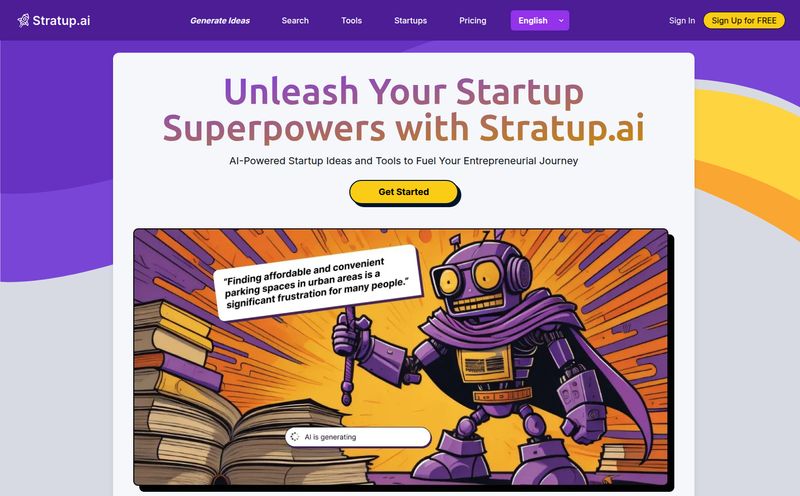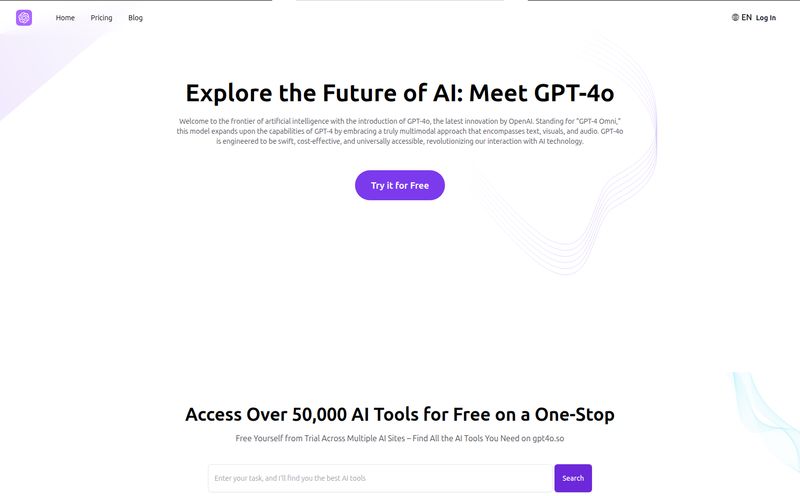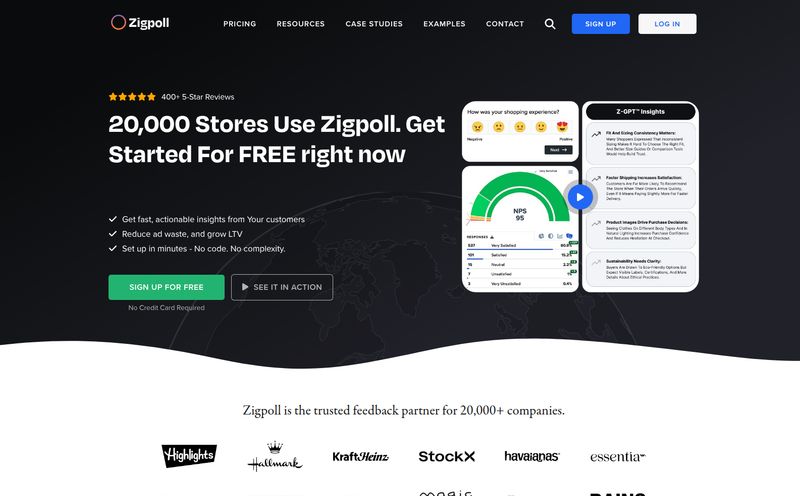We’re all drowning. Drowning in spreadsheets, in follow-up emails, in content calendars, in the endless, mind-numbing hum of repetitive tasks that eat up our day. For years, the promise of automation has been dangled in front of us. Tools like Zapier and Make.com were lifesavers, connecting our apps in a beautiful, linear dance. But what if you need more than a simple “if this, then that” jig? What if you need a whole choreographed performance?
That’s the new frontier we’re staring at. Not just task automation, but workforce automation. The idea of hiring a team of specialized AI agents to think, collaborate, and execute complex projects. It sounds like sci-fi, but platforms are popping up that claim to make it a reality. One that’s been lighting up my radar is MindPal. The pitch is seductive: build your own AI workforce, no PhD in computer science required.
As someone who's spent more years than I’d like to admit in the trenches of SEO and digital marketing, my hype-meter is pretty well-calibrated. I've seen a lot of 'game-changers' turn out to be minor novelties. So, I decided to roll up my sleeves, sign up, and see if MindPal is the real deal or just another flash in the pan.
So, What is MindPal, Exactly?
Forget thinking of MindPal as just another AI writer or chatbot builder. That’s like calling a smartphone just a phone. MindPal is a platform for creating and managing a team of AI agents. Think of it less like a single tool and more like a digital office where you can build, train, and deploy AI employees.
You can create a single agent—say, a “Marketing Copy Specialist”—or you can build a multi-agent workflow where several agents pass a project along, just like a real team. For example:
- An “Idea Generator” agent could brainstorm blog topics based on current trends.
- It then passes those topics to a “SERP Analyzer” agent to check out the competition.
- Finally, a “Content Writer” agent takes the analysis and drafts an SEO-optimized article.
That’s the core idea. It’s a platform to build these interconnected AI systems for everything from internal productivity tools and lead magnets to fully automated content pipelines. And a big plus for the control freaks among us (guilty), it lets you use different large language models (LLMs) like OpenAI’s GPT series, Claude, or Gemini. You're not locked into one ecosystem. You get to pick the best brain for the job.
The Features That Actually Move the Needle
Alright, let's get into the guts of the machine. A slick landing page is one thing, but what can you actually do with it? I poked around quite a bit, and a few things really stood out.
Building Your First AI Agent and Workflow
This is the main event, and I was pleasantly surprised by how straightforward it is. You give your agent a name, a role, and a goal. The magic happens when you feed it knowledge. You can upload documents, connect to a website, or paste text to create a unique “Knowledge Source.” This is how you train your AI to stay on-brand, reference specific product details, or adopt a certain tone of voice. No more generic, soulless AI content. Hallelujah.
But the multi-agent workflow builder is where my inner nerd really started getting excited. It’s a visual canvas where you drag and drop agents, connecting them to form a cohesive process. It feels a bit like building a high-tech digital assembly line. It turns abstract strategy into a tangible, automated process. This is the stuff that separates the serious business automation tools from the toys.
Custom Branding for Your AI Workforce
If you're an agency or building client-facing tools, this is non-negotiable. MindPal lets you slap your own logo and colors on the agents and workflows you create. When you embed a lead magnet chatbot on a client’s site, it looks like it was custom-built by you, not like a generic third-party tool. It’s a small detail, but it speaks volumes about professionalism. You can even use your own LLM API keys, which gives you more control over costs and usage.
An Entire Toolbox of Templates
Staring at a blank canvas can be intimidating. Thankfully, MindPal doesn't just throw you in the deep end. It comes pre-loaded with templates for common business tasks like “Automate News Briefing,” “Competitor Research,” “Persona Generator,” and “Business Idea Evaluator.” These are fantastic starting points. You can use them as-is or, more likely, customize them to fit your exact needs. This dramatically lowers the barrier to entry.
The Potential Downsides: A Reality Check
No tool is perfect, and it would be dishonest to pretend otherwise. While I'm pretty bullish on MindPal, there are a few things you need to be aware of before you jump in.
First, the entire system runs on AI credits. Your plan comes with a monthly allowance, but if your AI workforce is particularly busy, you might find yourself needing to upgrade or buy more. This is pretty standard for AI platforms, but it means the cost isn't always a flat fee. It’s something to monitor, especially as you scale.
Second, while it’s remarkably user-friendly for what it does, there's still a conceptual learning curve. You need to think like a process manager. If you're not used to breaking down tasks into logical steps, you might struggle to get the most out of the workflow builder at first. It's not plug-and-play magic; it's a powerful tool that requires a little bit of strategic thinking.
And finally, as with most SaaS platforms, some of the most powerful features are reserved for the higher-tier plans. Things like more user seats, higher credit limits, and priority support come at a premium. It’s just the nature of the business.
MindPal Pricing: How Much Does an AI Workforce Cost?
Okay, the million-dollar—or, hopefully, much less—question. What’s the price tag on this? The pricing is tiered, which I appreciate. You’re not forced into an enterprise plan when you’re just a one-person show.
| Plan | Monthly Price | Best For |
|---|---|---|
| Pro | $39 | Individuals and solo entrepreneurs getting started. |
| Team | $149 | Small teams and startups ready to collaborate and scale. |
| Business | $374 | Growing businesses that need more power and personalized support. |
| Enterprise | Custom | Large organizations with very specific, high-volume needs. |
Note: These prices are based on the monthly billing option. You can usually get a discount (the site says 20%) by paying annually.
My take? The Pro plan is a great entry point for freelancers or consultants. The Team plan at $149/month feels like the sweet spot for most small agencies or startups. It unlocks more user seats and a healthier amount of AI credits, which you’ll need if you start building out multiple complex workflows.
The Final Verdict: Is MindPal the Future of Work Automation?
After spending some quality time with MindPal, I have to say, I'm genuinely impressed. It’s one of the first platforms I’ve seen that makes the concept of a collaborative AI workforce accessible to a non-technical business user. It successfully bridges the gap between simple, single-step automation and the incredibly complex world of custom AI development.
Is it going to replace your human team tomorrow? No. But will it free them from the drudgery of repetitive, process-driven tasks so they can focus on high-level strategy and creativity? Absolutely. I see this as a massive force multiplier for agencies, marketing teams, and operations departments.
If you’re someone who looks at your daily to-do list and thinks, “A robot should be doing this,” then MindPal is, without a doubt, worth a serious look. It feels like we’re at an inflection point in how we work, and this tool is a very real glimpse into that much more efficient future. I, for one, am excited to see where it goes.
Frequently Asked Questions About MindPal
- What is MindPal and how is it different from a tool like Zapier?
- MindPal is a platform for building AI agents and multi-agent workflows to automate complex tasks. While Zapier is excellent for connecting two apps for a simple action (e.g., when I get an email, add a row to a spreadsheet), MindPal is for creating a process where AI agents can analyze information, make decisions, and collaborate to complete a multi-step project.
- Can I train the AI agents on my own business data?
- Yes, and this is one of its best features. You can create "Knowledge Sources" by uploading documents (like PDFs or text files) or connecting to a website. This allows your AI agents to generate on-brand content and answer questions with specific knowledge about your products or services.
- What happens if I run out of AI credits or knowledge storage?
- Your plan comes with a set amount of credits and storage. If you run out, your agents and workflows will stop running until the next monthly cycle or until you upgrade your plan. The pricing page indicates you can also purchase extra credits and storage as add-ons.
- Is MindPal hard to use if I'm not a developer?
- No, it’s designed for business users, not programmers. The interface is visual and intuitive, especially with the drag-and-drop workflow builder and templates. However, you will get more out of it if you have a clear understanding of the business processes you want to automate.
- Can I embed the AI agents and chatbots on my own website?
- Yes, you can publish your AI agents and workflows and get an embed code to easily add them to your website or landing pages. This is perfect for creating interactive lead magnets or customer support bots.
- What AI models does MindPal support?
- MindPal integrates with a variety of leading Large Language Models (LLMs), including those from OpenAI (like GPT-4), Anthropic (Claude), and Google (Gemini). This gives you the flexibility to choose the best AI for your specific task.
Reference and Sources
- MindPal Official Website
- MindPal Pricing Page
- Emerging Architectures for LLM Applications - A great read from a16z on the technical side of what platforms like MindPal are building.




